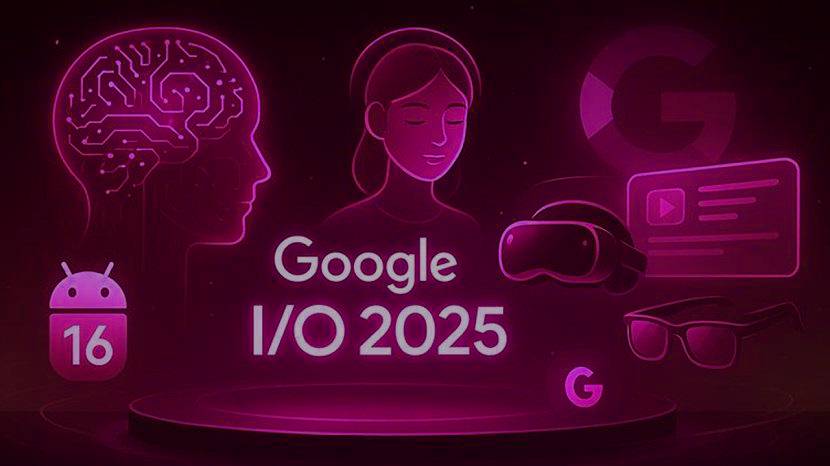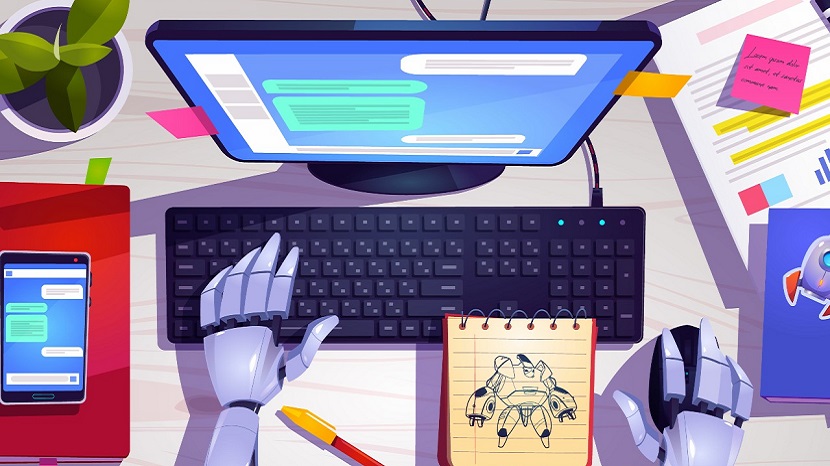
Artificial Intelligence (AI) refers to the simulation of human intelligence in machines that can perform tasks that typically require human cognition, such as learning, reasoning, problem-solving, and decision-making. AI integrates various technologies like machine learning, natural language processing, robotics, and computer vision to enable machines to perform complex tasks autonomously.
How Does Artificial Intelligence Work?
AI functions through a combination of algorithms, computational power, and vast amounts of data. The key components of AI include:
- Machine Learning (ML): Enables systems to learn from data and improve performance without explicit programming.
- Neural Networks: Mimic the human brain to process information and recognize patterns.
- Natural Language Processing (NLP): Helps machines understand and respond to human language.
- Computer Vision: Allows machines to interpret and analyze visual data.
- Robotics: Incorporates AI into physical machines to perform automated tasks.
AI works by collecting data, analyzing patterns, making predictions, and improving its accuracy over time through training models.
How to Create an Artificial Intelligence System
Creating an AI system involves several steps:
- Define the Problem: Identify the specific issue AI will solve.
- Gather and Process Data: Collect relevant data and clean it for accuracy.
- Choose the Right Algorithms: Select machine learning algorithms suitable for the task.
- Train the Model: Feed data into the model and refine it using training techniques.
- Test and Validate: Assess model performance and optimize for better accuracy.
- Deploy the AI System: Integrate AI into real-world applications for practical use.
Types of Learning in Artificial Intelligence
AI learns through different approaches:
- Supervised Learning: Uses labeled data to train models, improving accuracy over time.
- Unsupervised Learning: Identifies patterns and relationships in unlabeled data.
- Reinforcement Learning: Machines learn by trial and error to maximize rewards.
- Semi-Supervised Learning: Combines both labeled and unlabeled data for efficient training.
Types of Agents in Artificial Intelligence
AI agents are classified based on their functionality:
- Simple Reflex Agents: React to specific conditions without memory.
- Model-Based Reflex Agents: Store knowledge of past actions and their effects.
- Goal-Based Agents: Focus on achieving predefined goals.
- Utility-Based Agents: Optimize actions based on utility functions.
- Learning Agents: Improve performance through experience and feedback.
How to Make an Artificial Intelligence Working Model
To create a working AI model, follow these steps:
- Choose a Programming Language: Python, R, or Java are commonly used.
- Select an AI Framework: TensorFlow, PyTorch, or Scikit-Learn.
- Prepare a Dataset: Collect and preprocess relevant data.
- Build the Model: Define and train machine learning models.
- Evaluate the Model: Test accuracy and optimize performance.
- Deploy the AI: Integrate it into applications for real-world use.
Advantages of Artificial Intelligence
- Automation of Tasks: Reduces human workload by automating repetitive tasks.
- Increased Efficiency: AI-powered systems perform tasks faster and more accurately.
- Data Processing Capabilities: Analyzes large datasets efficiently.
- Enhanced Decision-Making: Provides insights based on predictive analytics.
- Personalization: AI customizes user experiences in applications like e-commerce and streaming platforms.
Disadvantages of Artificial Intelligence
- High Development Costs: AI systems require significant investment.
- Job Displacement: Automation may replace certain human jobs.
- Bias in AI Models: Poor data selection can result in biased outcomes.
- Security Risks: AI systems are vulnerable to cyber threats.
- Lack of Creativity: AI lacks human emotions and innovation.
How to Make a Career in Artificial Intelligence
A career in AI requires a strong foundation in mathematics, programming, and machine learning. Here are the steps to get started:
- Education: Obtain a degree in computer science, data science, or AI-related fields.
- Learn Programming: Python, R, and Java are essential for AI development.
- Gain Knowledge in ML and Deep Learning: Study algorithms and frameworks like TensorFlow and PyTorch.
- Work on AI Projects: Build AI models and contribute to open-source projects.
- Get Certifications: Online AI certifications can enhance credibility.
- Apply for AI Jobs: Roles include AI Engineer, Data Scientist, and NLP Specialist.
Conclusion
Artificial Intelligence is transforming industries and reshaping the future. Understanding its working principles, learning methodologies, advantages, and challenges is crucial for leveraging AI effectively. A career in AI offers numerous opportunities, and with the right skills and knowledge, individuals can contribute to this evolving field. As AI continues to advance, its impact on society will only grow, making it an exciting area for exploration and innovation.
If you found this article helpful, we encourage you to share it on your social media platforms—because sharing is caring! For more information about article submissions on our website, feel free to reach out to us via email.
Send an emailWritten by RGB Web Tech
Latest Technology Trends
Latest technology trends shaping the future, including AI advancements, blockchain innovation, 5G connectivity, IoT integration, and sustainable tech solutions. Explore breakthroughs in quantum computing, cybersecurity, augmented reality, and edge computing. Stay ahead with insights into transformative technologies driving innovation across industries and revolutionizing how we live, work, and connect.
Related Articles - Artificial Intelligence

AI Video Maker
Best AI Video Maker tools for effortless video creation. Turn text into stunning videos with automation, avatars, and editing AI.

AI Writing Tools
Boost your writing with AI Writing Tools for content creation, editing, and SEO. Improve quality, engagement, and efficiency effortlessly!

AI Image Generator
Best AI Image Generators to create stunning visuals effortlessly. Explore top tools, features, and unleash your creativity

AI Social Media Post Generator
Best AI social media post generators to automate content creation, boost engagement, and optimize your marketing strategy.

AI Logo Generator
Top 10 AI logo generators for effortless branding. Create professional logos instantly with AI-powered design tools.

AI Powerpoint Maker
Best AI PowerPoint makers to create stunning presentations effortlessly with smart design, automation, and collaboration tools.

AI Code Generator
AI Code Generators enhance coding efficiency with AI-driven suggestions, auto-completions, and debugging tools for multiple languages.

Artificial Intelligence
What Artificial Intelligence (AI) is, how it works, its types, applications, and impact on various industries.

Artificial Intelligence Work
How Artificial Intelligence works, from machine learning to deep learning, and how AI powers modern technology.

Create an Artificial Intelligence System
Learn how to create an AI system step by step, from data collection to model deployment, using machine learning and deep learning.

Google I/O 2025: AI and Search Innovations
Discover the top AI & search updates from Google I/O 2025—Gemini Live, AI agents, real-time translation, and the future of SEO. Learn how to adapt now!

How AI Writing Tools Improve Content Quality of Your Blogs
How can you make your blogs more engaging? AI writing tools cut errors, save time, give fresh ideas, & help your words sound natural.
